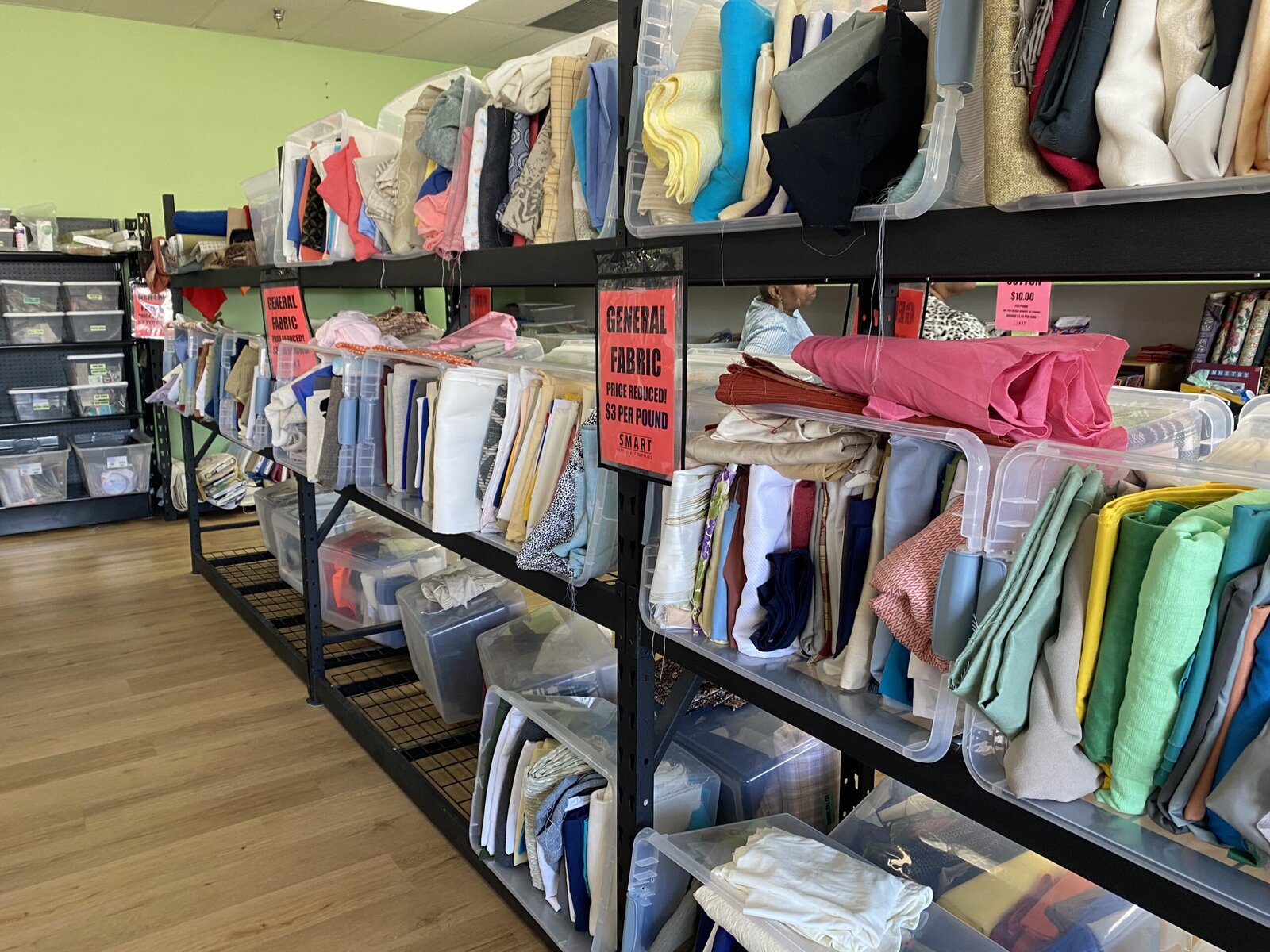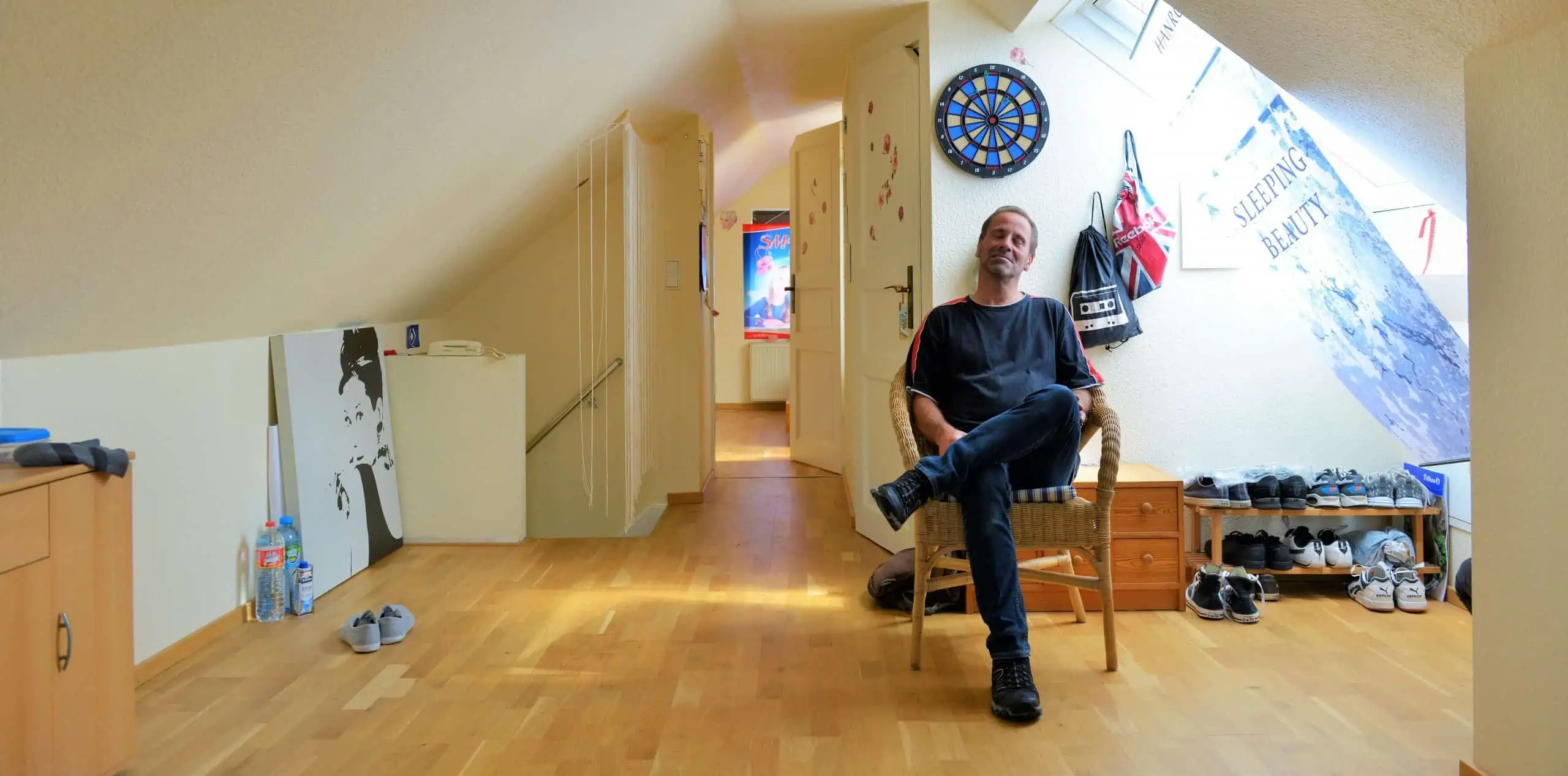This article was copublished by Reasons to be Cheerful and Next City.
At the swimming pool on Long Island University’s Brooklyn campus, the air buzzed with excitement. Dozens of chattering, gleeful youth filled the space.
Some stood in line to collect a pair of goggles and a swim cap, before playfully helping each other to yank them on. Others sat quietly atop poolside benches, watching the water glisten beneath the indoor arena’s glaring lights. At their instructors’ signal, the teens catapulted into the pool. Slicking their hair back, they beckoned to their friends to do the same.
Among them was Jayden Rosario, a high school student who, despite hailing from the Rockaways — a seafront peninsula in New York City — had never swum in its open waters.

“I go on the boardwalk to ride my bike a lot, but I don’t really go on the beach to swim,” Rosario says.
One of 45 young people aged 16 to 24, Rosario is part of the New York City Housing Authority (NYCHA) Swim Corps program. The innovative Summer Youth Employment Program (SYEP) is led by Rising Tide Effect, a New York City-based nonprofit. It allows youth living in the city’s public housing developments to learn to swim, while getting paid.
The six-week program works much like a summer job: Participants “clock in” in the morning, and “clock out” in the evening. And if they don’t show up, they don’t get paid.
Many of these youth have never learned to swim, and a 2017 USA Swimming Foundation study found that 79 percent of American children from families with an annual income of under $50,000 are at risk of drowning. As of 2023, the average income of a household living in New York City public housing was $25,605.

The NYCHA Swim Corps program is in its second year, and for the first time, has recruited young adults from all five boroughs. Its pilot run last summer took in only those living in Brooklyn and Queens. Aside from learning to swim, the program offers another perk: access to well-paying blue economy jobs. Students are taught the fundamentals of water safety in New York City’s blue spaces, and exposed to local industry professionals such as lifeguards and ferry captains.
While the average NYCHA household earns an annual income of less than $30,000, the average cost of living in New York City is $49,623, according to Forbes’ 2024 estimates. This means that many low-income New Yorkers are working more, but earning less.
The youth program’s participants are no exception. Currently, most work multiple jobs, despite already being paid a stipend for their participation in the program.
Mariam Touray works night shifts as a security guard at a student residence on Fordham University’s campus in the Bronx. She reports for duty from 10 p.m. to 6 a.m. on Thursday to Monday nights, and is paid $19.45 an hour. To pass time, she watches Netflix and Hulu on her phone. During the day, she downs Red Bull and Monster energy drinks to keep awake.
Weighed down by negative news?
Our smart, bright, weekly newsletter is the uplift you’ve been looking for.“I know it’s (the drinks are) not good, but that’s all they have on my block,” says Touray, who lives with her family in the South Bronx.
The students in the NYCHA Swim Corps undergo classes in water safety, CPR and AED usage — skills which prepare them for obtaining a lifeguard license. Each year in December, the city opens trials for the Municipal Lifeguard Training Program, a free, 40-hour course which familiarizes prospective lifeguards with “swimming and rescue techniques, first-aid, and CPR.” But to get in, individuals have to first pass a qualifying exam, which requires them to swim 50 yards in 45 seconds or less.
Gismelgi Cuevas and Diana Mileydi plan to apply their swimming skills to find work next summer. Rosario shares the same goal. After all, according to them, lifeguarding pays handsomely compared to many other available jobs.
“$22 an hour, for lifeguards,” says Rosario. “Overtime is $33, and holidays are $55.”
Once qualified, lifeguards can choose between overseeing a beach or pool, and job opportunities abound.
“There’s a shortage of lifeguards in the city, so be a lifeguard,” says Cuevas. “You’ll get hired easily, I promise you.”
In May 2024, New York City only had 230 beach lifeguards on staff — though 600 are required to oversee all its beaches.
But for now, working multiple jobs is taking a toll on participants like Touray. The group took a field trip to the Brooklyn Navy Yard on a Tuesday morning, for a ferry ride and a behind-the-scenes tour of the NYC Ferry headquarters. Trips like these allow participants to meet those working jobs in the city’s blue economy, and tour workplaces that might not otherwise be open to the general public.

On the afternoon of the tour, it had been more than 24 hours since Touray last slept, and fatigue was creeping in. She trudged along as the group approached the dock where ferries were parked.
“What if I don’t want to go on the tour? What if I want to stay inside?” said Touray.
The students were shown into the NYC Ferry’s marine operations control room, where screens displayed camera footage of different corners of the dock. Staff members toiled away, studying the traffic along each strait in New York’s surrounding waterways. One youth asked about the requirements to become a boat captain. She initially thought the NYC Ferry only recruited retired members of the Navy, but learnt that she too, could become a captain.
Back outside, the students were being shown around the docks. Here, ships rested on a dry platform, and port workers milled about. Rosario’s hand shot up.
“Do you need college for this?” Rosario asked.
The guide shook his head.
Once a year, NYC Ferry opens entry-level roles for positions such as electricians and welders. According to him, anyone can apply. If accepted, they are put through a training program to equip them with the necessary skills before joining the team.

But despite the upsides of the NYCHA Swim Corps program, which acquaints students with the water and jobs in related industries, it faces a huge obstacle: enrollment. The challenge begins during recruitment. Youth can be referred into the program in several ways — through providers, who are social workers embedded in community centers within each NYCHA project, or via other local programs such as the New York Police Department (NYPD)’s Police Explorers Program.
But reaching out to young adults who fall through the gaps of community programming has proven difficult. Rising Tide Effect conducted on-site outreach events at NYCHA developments across the city last winter. But hardly anyone showed up.
“Some of the other SYEPs can be working at Staples, working at Walgreens, working in stores and departments that are very familiar to them,” says Raquel Torres, the program’s Communications Director. “And so to then go from an SYEP that’s familiar, to learning how to swim and (the) blue economy, it’s like, what are these things?”

And the lengthy registration process — which includes mandatory forms and safety waivers — has also deterred some young people initially interested in the program.
“We had about 100 apply this summer, of which 80 did their paperwork, 55 went to the orientation and onboarding, and 45 showed up,” says Kaitlin Krause, the founder of Rising Tide Effect.
Even after youth enter the program, the team faces the uphill challenge of encouraging them to stay. Last year, the NYCHA Swim Corps pilot began with 17 participants. Just 11 made it till graduation.
But the team has provided a myriad of benefits in hopes of attracting and keeping more youth in the program. They partner with Speedo, Public Housing Community Fund and other private donors, to equip participants with new swim gear, nutritious lunches and a laptop each. Staff members guide them on writing cover letters and resumes for future job applications.
“To really fix the equity access issue, you (have) got to remove all the barriers,” Krause says.
For a budding local program, the NYCHA Swim Corps punches above its weight. Other similar initiatives around the U.S., such as Los Angeles’ Swim LA — have higher barriers of entry.
Swim LA’s flagship summer program, Camp Splash, likewise offers small group swim and water safety lessons. It is however catered to children aged 7-12, and while being advertised as “affordable swim lessons,” costs between $100-$400 for two weeks of water activities running from Monday to Friday.
Krause and her team have high hopes for the Swim Corps, even hoping to expand their program internationally to locations such as Nicaragua. But for now, despite the uphill battle, their work has paid off for participants like Touray.
“I came in here not knowing anything about swimming — I didn’t know the strokes, (and) I didn’t know how I’m supposed to move my feet,” Touray says. “But now I can say I comfortably swim on my back, I’m treading finally, and I just need to learn how to do freestyle.”











